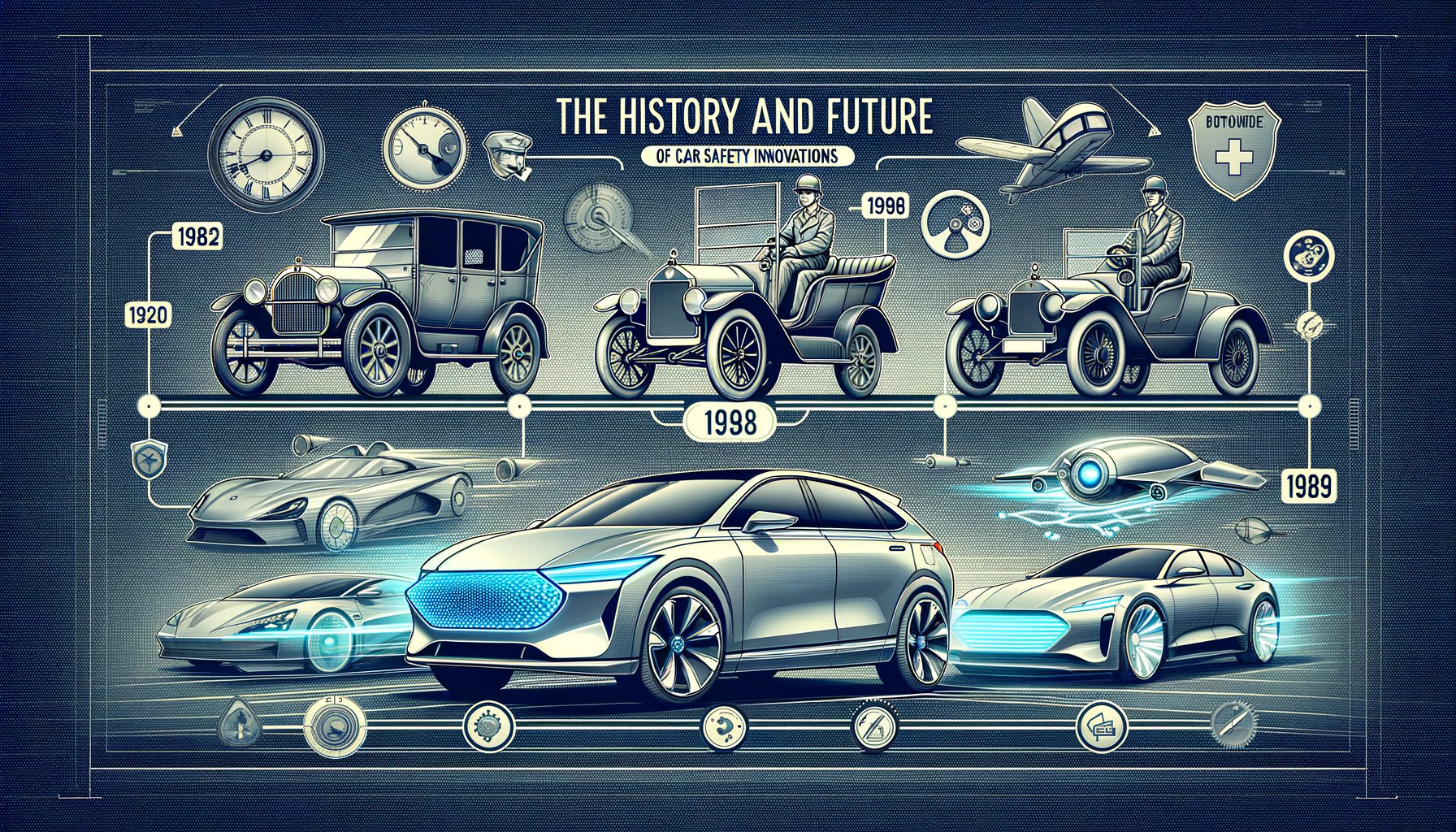Physical Address
304 North Cardinal St.
Dorchester Center, MA 02124
Physical Address
304 North Cardinal St.
Dorchester Center, MA 02124

The automobile has come a long way since its inception in the late 19th century. What started as a simple horseless carriage has evolved into a complex machine that is an integral part of our everyday lives. But with this advancement comes the need for safety, prompting continuous innovation in car safety technologies. In this article, we’ll delve into the fascinating history of car safety innovations and take a glimpse at what the future holds.
In the early days of motoring, safety was not a priority. Cars were slow-moving contraptions with little to no protection for their occupants. It wasn’t until the 1930s that manufacturers began to consider safety features seriously.
One of the first significant advances was the introduction of hydraulic brakes by Chrysler in 1924. This was quickly followed by Ford’s adoption of laminated glass in 1929, which helped prevent shattering upon impact.
The post-war era saw a boom in automotive production and an increased focus on safety. Seatbelts were introduced in cars by Nash Motors in 1949, but it took another decade before they became standard equipment due to legislation.
It was also during this period that padded dashboards were introduced, reducing injuries during collisions. Furthermore, dual-circuit braking systems became standard issue, ensuring that even if one circuit failed, the other could still bring the vehicle to a halt.
The advent of electronics in cars brought about significant advancements in safety technology. Anti-lock Braking Systems (ABS) debuted in production cars during the early 1970s, preventing wheel lock-up during braking and allowing drivers to maintain control over steering.
Airbags were introduced in the 1970s as well, initially only for the driver but eventually expanding to include passenger and side airbags. Electronic Stability Control (ESC) systems, which help drivers maintain control of their vehicle during extreme steering manoeuvres, became widespread during the late 1990s.
Today, car safety technology has become incredibly sophisticated. Advanced Driver Assistance Systems (ADAS) such as adaptive cruise control, lane-keeping assist, and automatic emergency braking are becoming standard features in many new cars. These systems use a combination of cameras, radar, and other sensors to detect potential hazards and take corrective action if necessary.
The future of car safety lies in autonomous driving technology. Self-driving cars have the potential to significantly reduce accidents caused by human error – which account for an estimated 94% of all traffic accidents according to a study by the National Highway Traffic Safety Administration (NHTSA).
Autonomous vehicles use a suite of sensors including LiDAR (Light Detection and Ranging), radar, ultrasonic sensors, and high-resolution cameras to understand their surroundings. They also rely on advanced machine learning algorithms to make decisions about how to navigate safely.
While fully autonomous vehicles are still years away from being commonplace on our roads due to regulatory hurdles and technical challenges, semi-autonomous features like Tesla’s Autopilot or Cadillac’s Super Cruise are already providing drivers with a taste of what’s to come.
The history of car safety is a testament to human ingenuity and our relentless pursuit for improvement. From hydraulic brakes and seatbelts to airbags and ADAS – each innovation has made our journeys safer.
The future promises even greater leaps with the advent of autonomous driving technology. While there are still many challenges to overcome, it’s clear that car safety will continue to evolve and improve, making our roads safer for everyone.